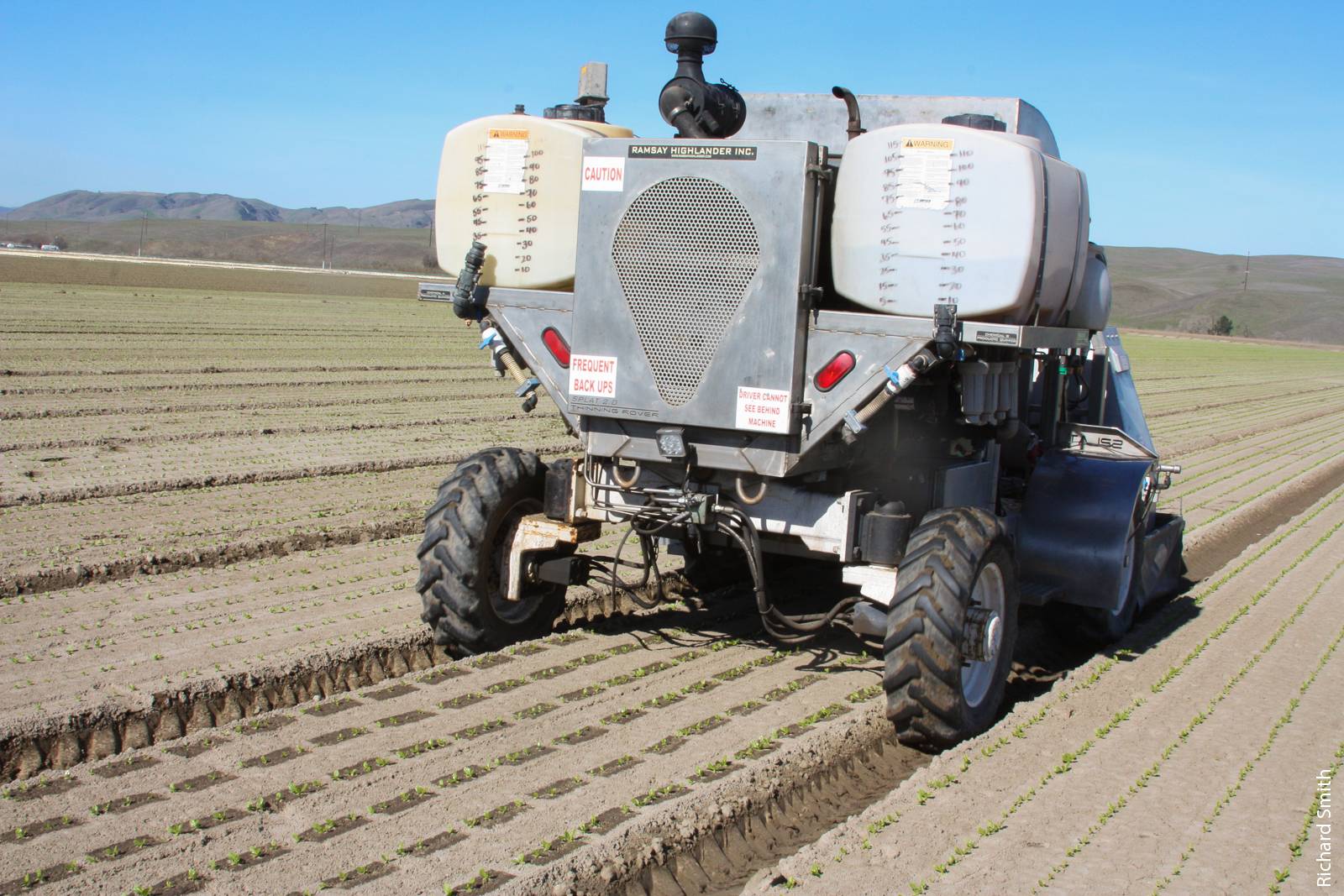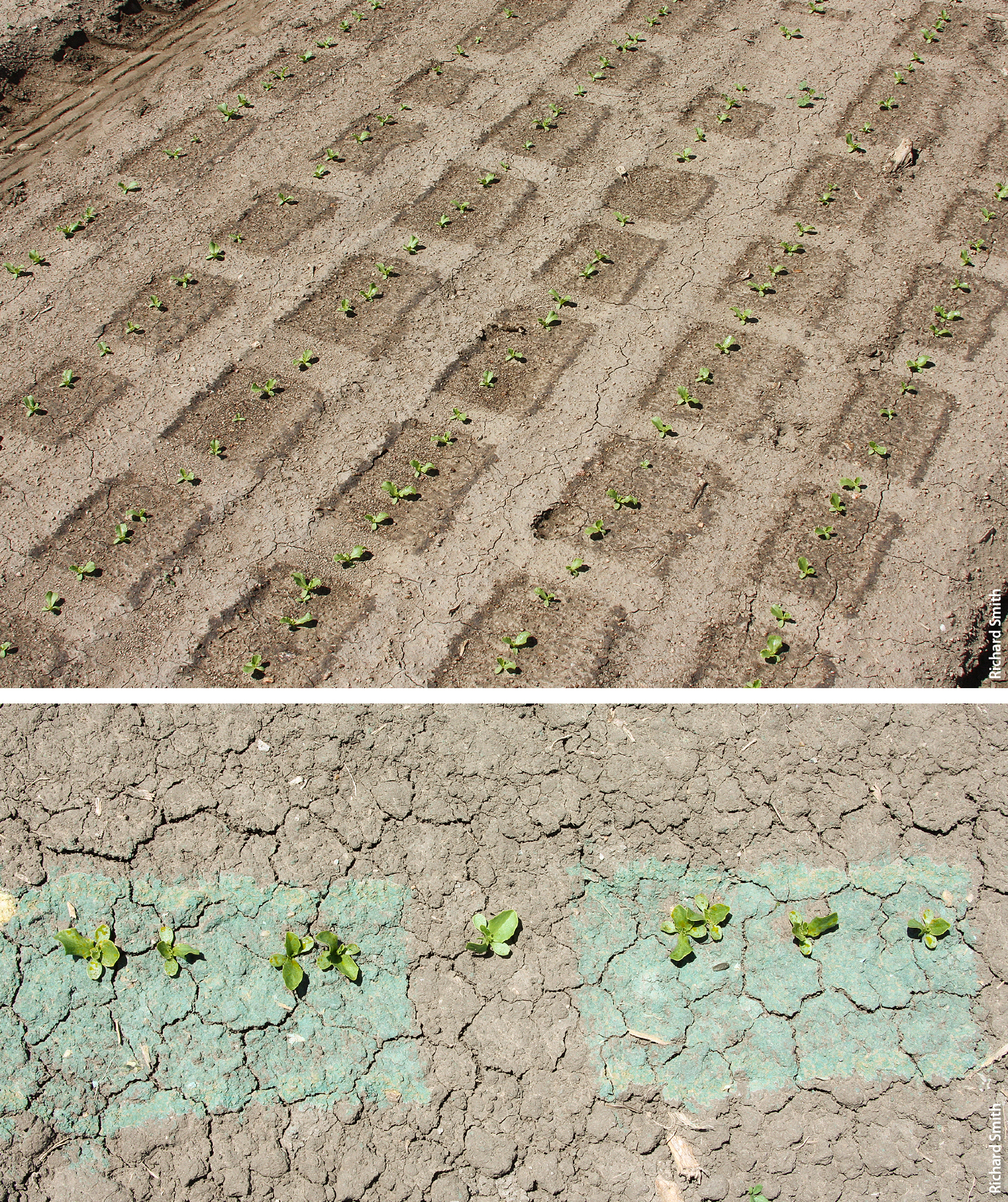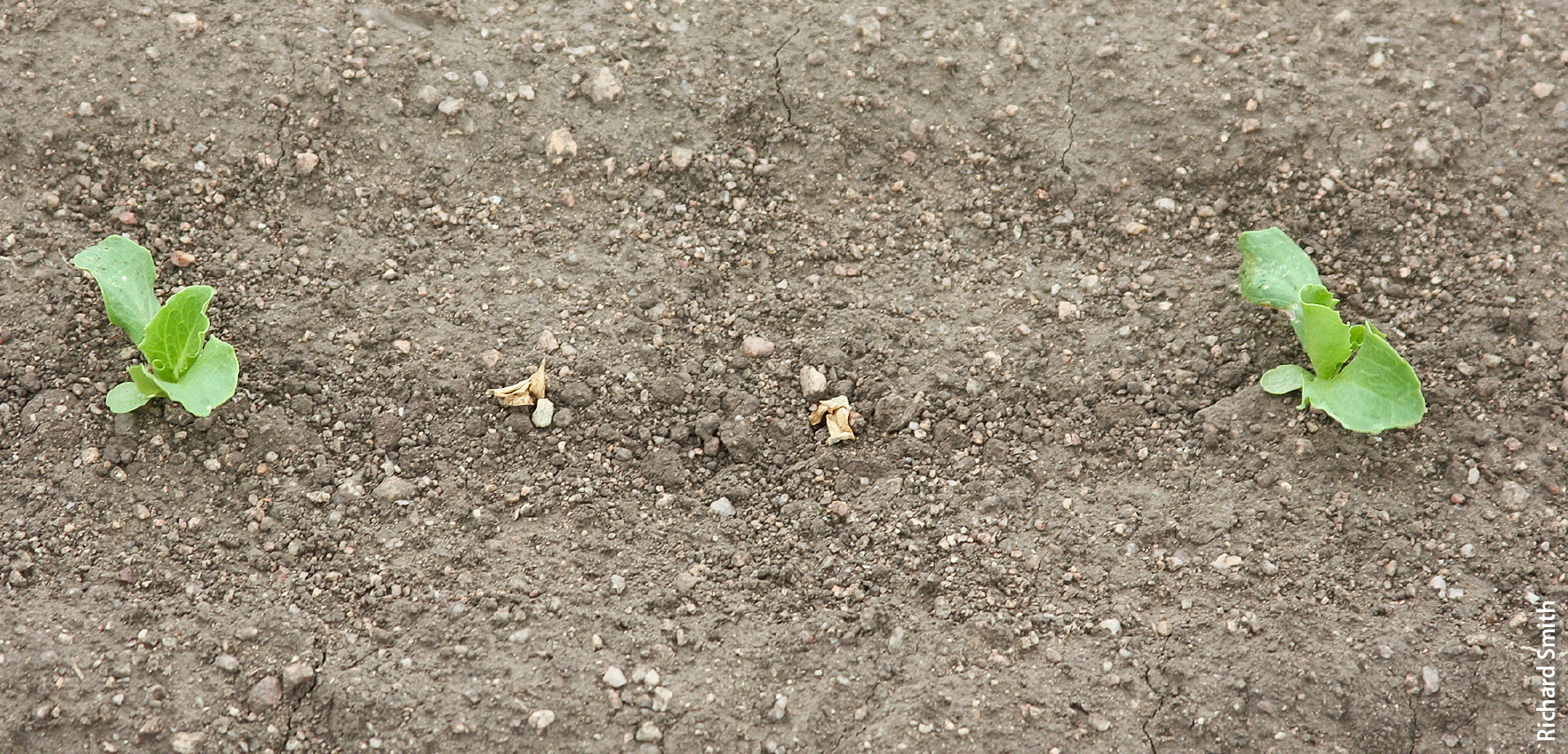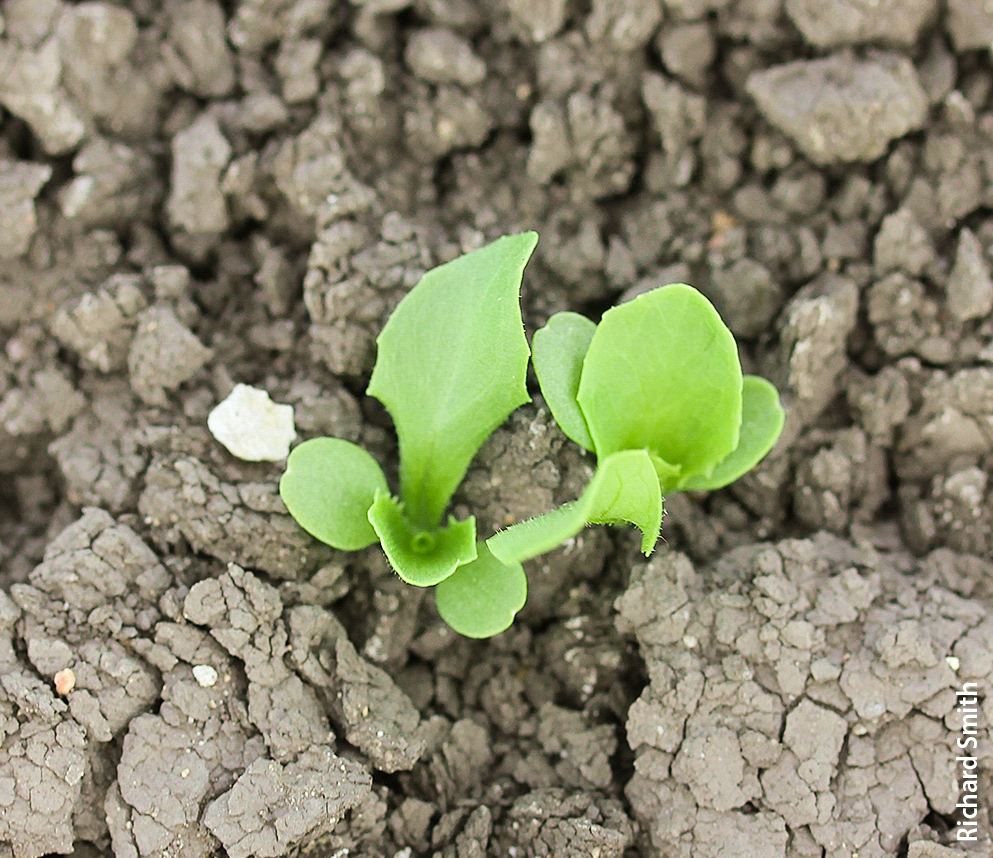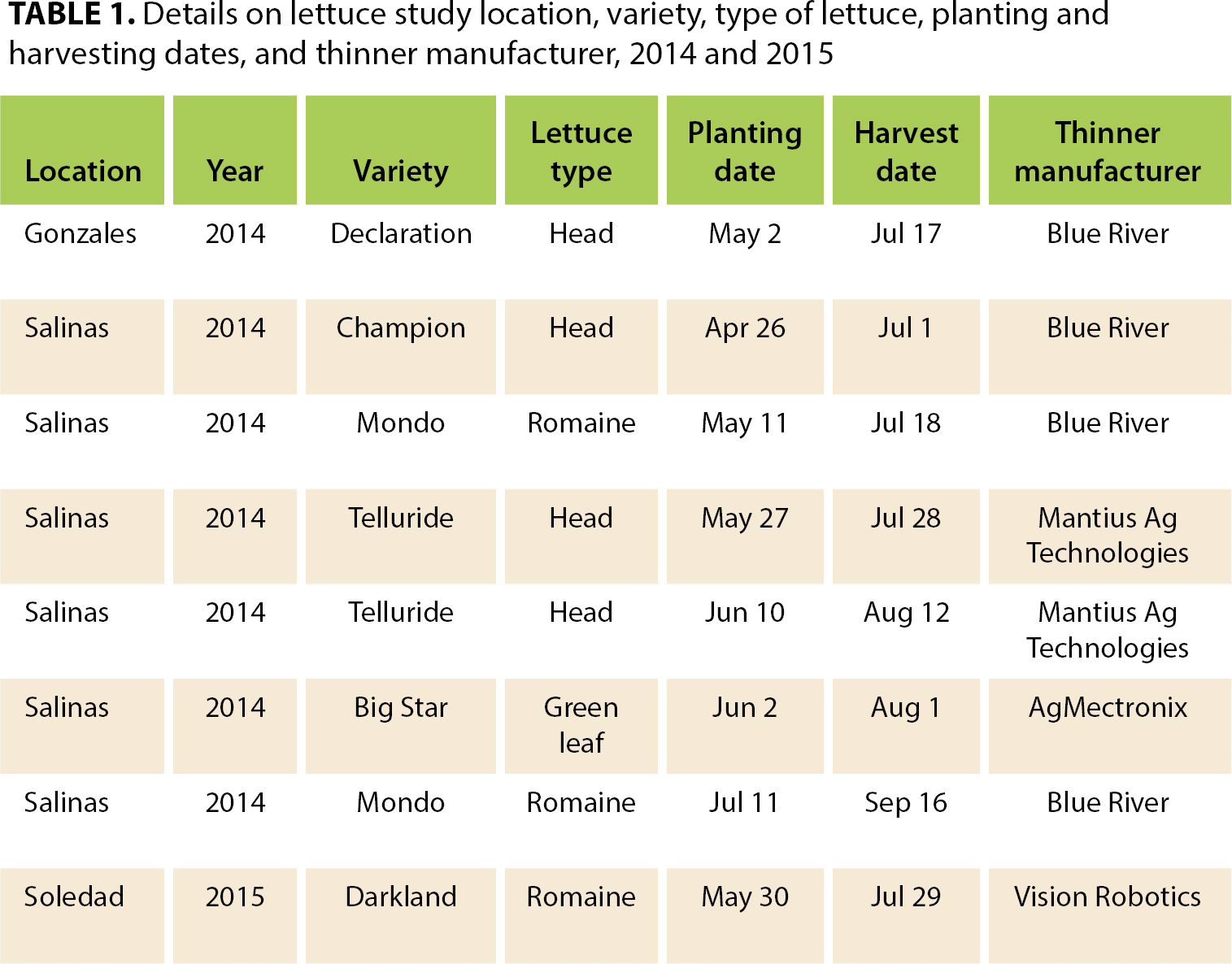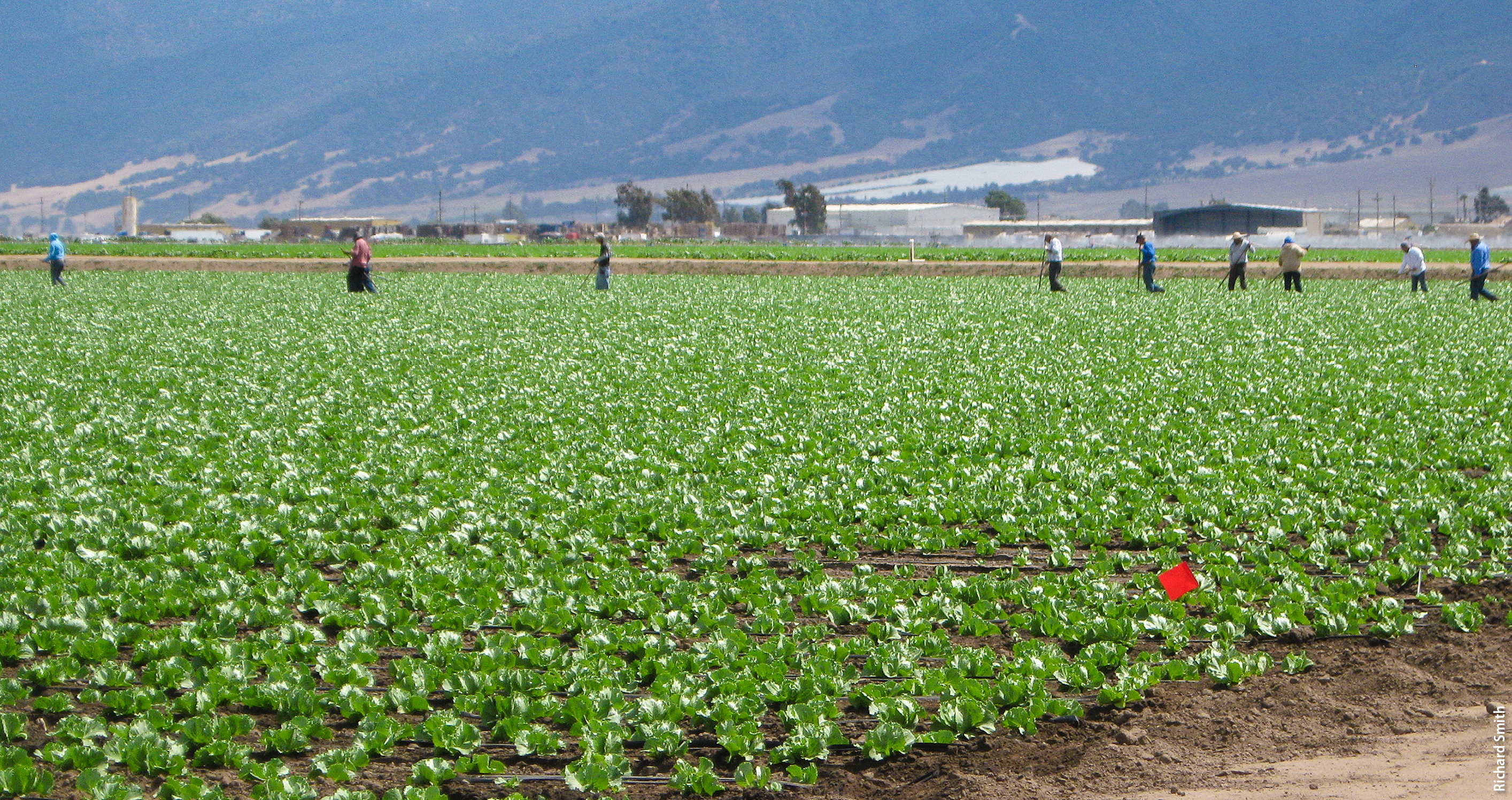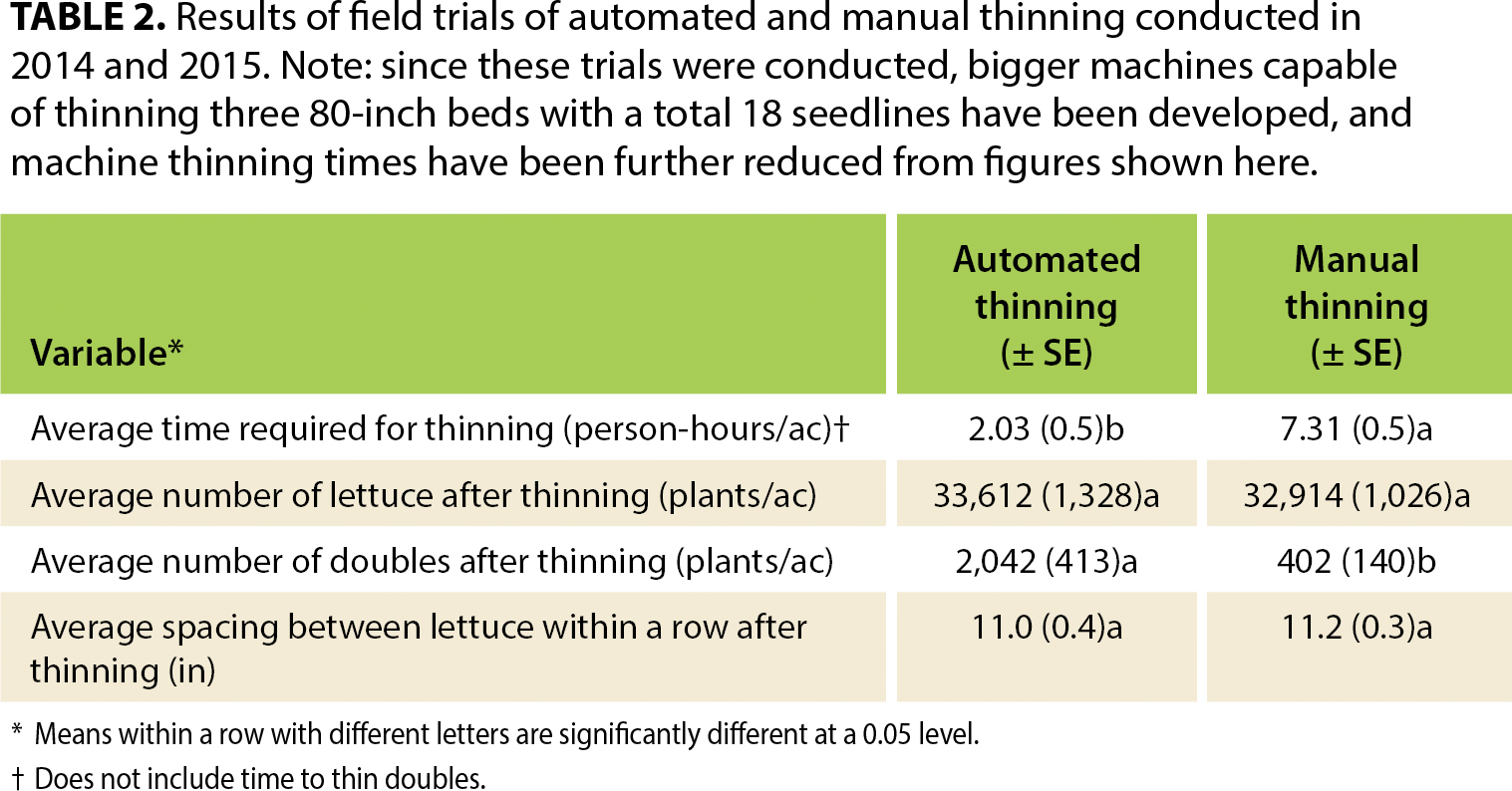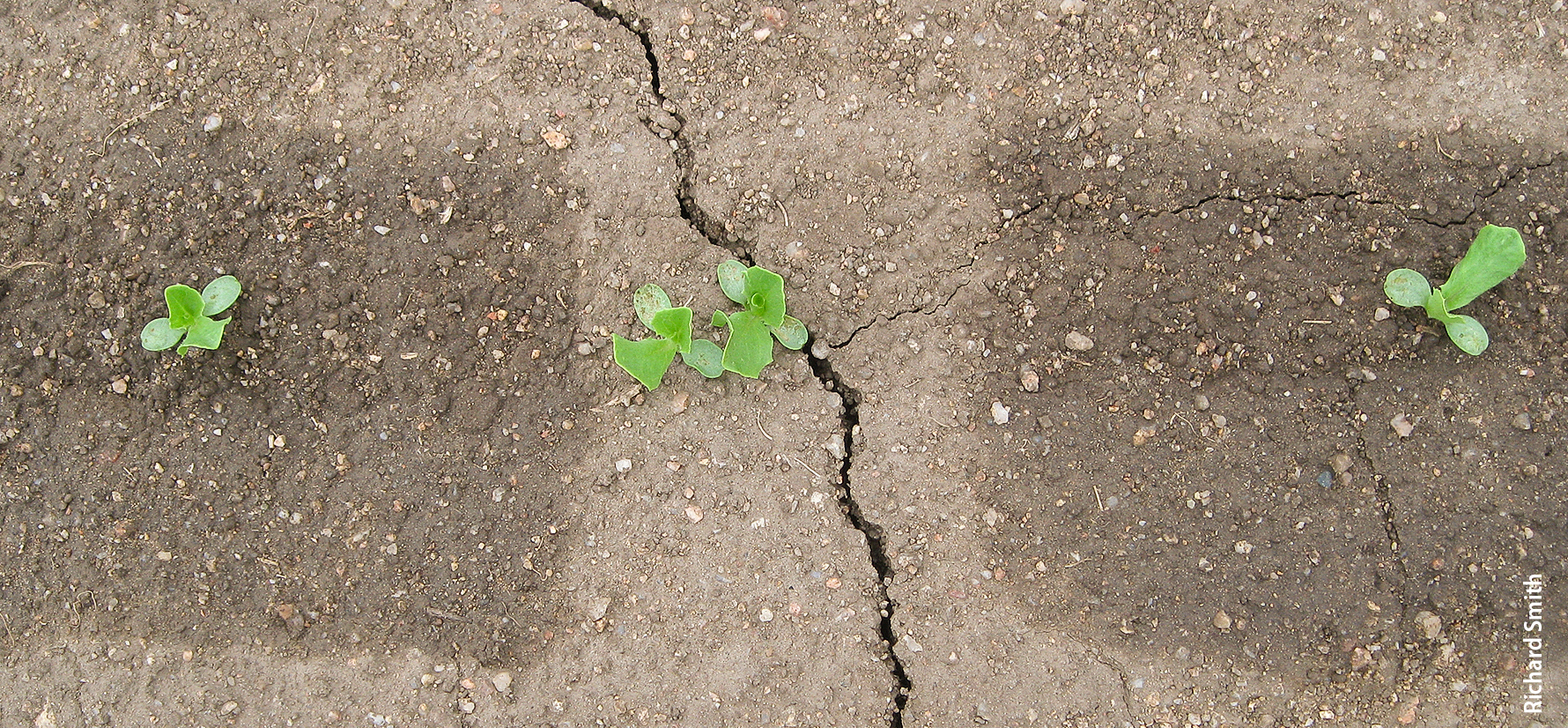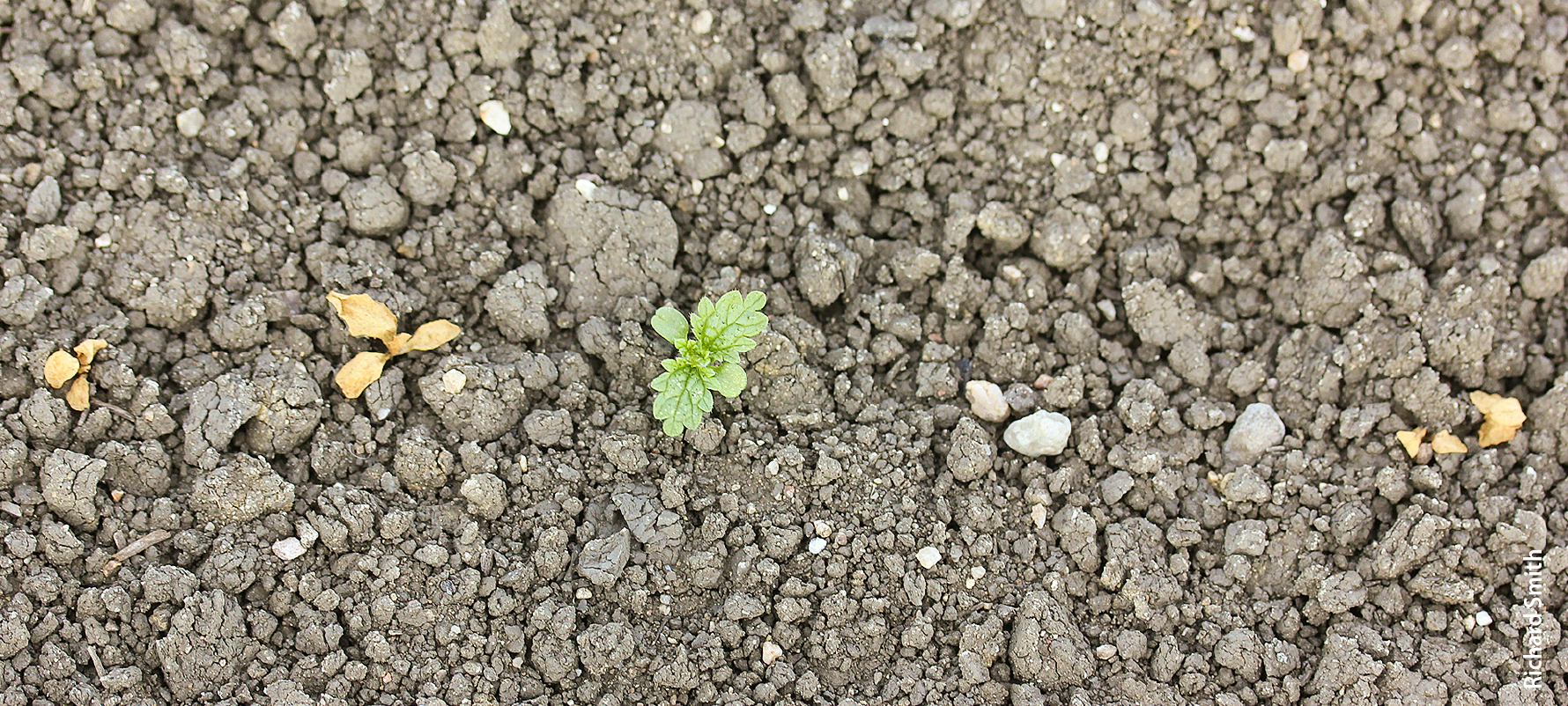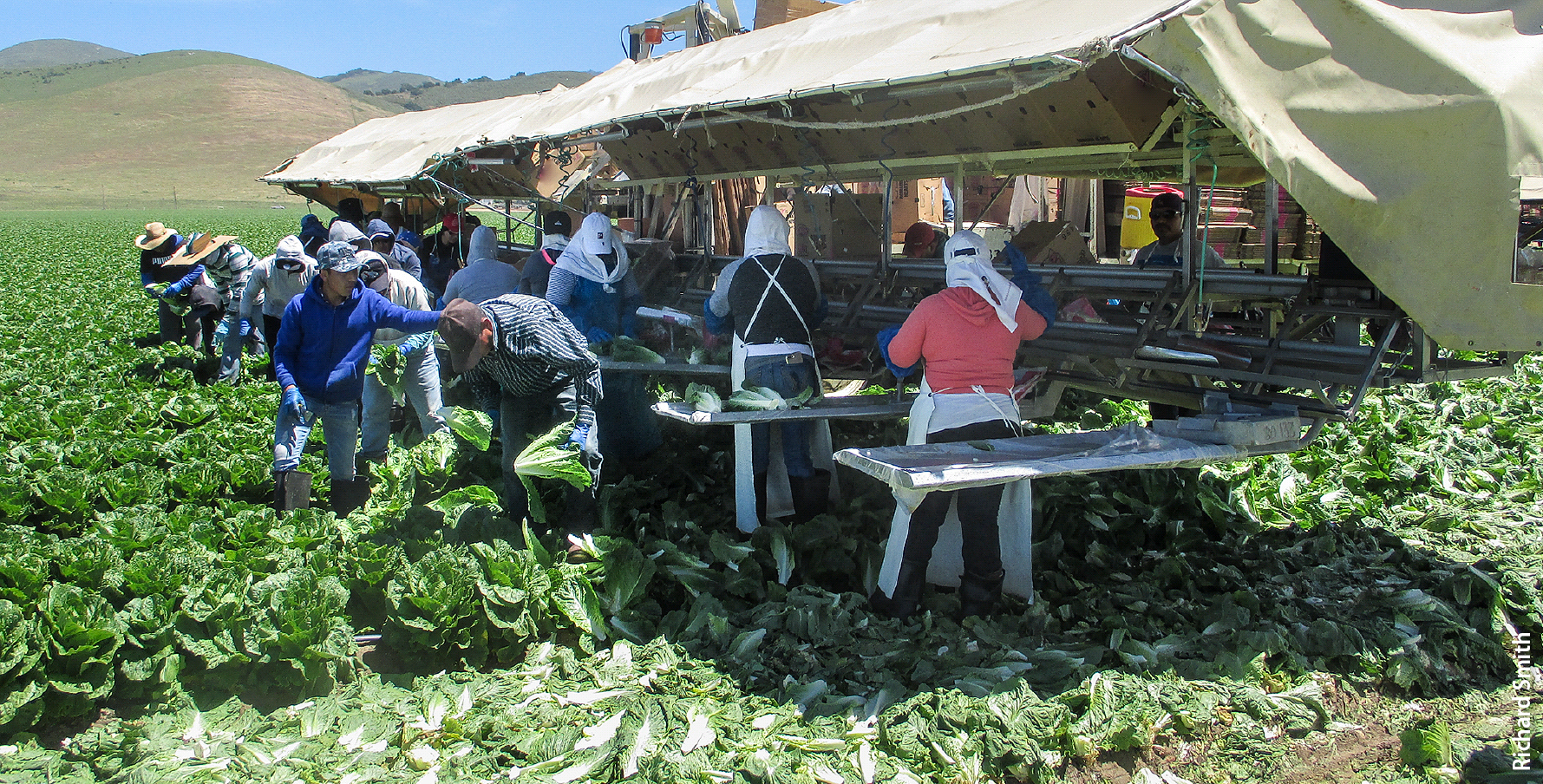All Issues
Automated lettuce thinners reduce labor requirements and increase speed of thinning
Publication Information
California Agriculture 72(2):114-119. https://doi.org/10.3733/ca.2017a0018
Published online May 15, 2017
PDF | Citation | Permissions
NALT Keywords
Abstract
Salinas Valley lettuce growers are adopting automated lettuce thinners to improve labor efficiency. We conducted field studies in 2014 and 2015 to compare the time involved in automated and manual thinning of direct-seeded lettuce and any differences in lettuce quality and yield. We recorded the number of doubles (two closely spaced plants) left behind after thinning, time taken to remove the doubles, final crop stand, efficiency in weed removal, crop yield and disease incidence. Using an automated thinner in place of manual hoeing reduced the thinning labor requirement from 7.31 ± 0.5 person-hours per acre to 2.03 ± 0.5 person-hours per acre. Automated thinning left more doubles than manual thinning, resulting in additional time to remove them, but was overall more labor-efficient and had no impact on yield or disease incidence.
Full text
In recent years, California's agriculture industry has been hindered by a declining supply of farm labor (Taylor et al. 2012), generating interest among growers in methods to reduce labor requirements for thinning, weeding, irrigating and harvesting (Fennimore et al. 2010; 2014). Thinning lettuce is particularly labor intensive, and most lettuce fields in California are hand-thinned (manually thinned). Automated lettuce thinners that use machine vision and computer image processing, and a spray system to remove unwanted plants, were introduced to the Salinas Valley 4 years ago. Growers are evaluating their cost and performance to see if they have a fit in their operations.
California growers are adopting automated lettuce thinners to improve labor efficiency. An automated thinner pulled behind a tractor can thin up to 18 seedlines at 2 mph. However, doubles left behind must be removed manually.
An automated thinner, which typically needs only one person to run it, removes plants to ensure accurate final plant spacing and provide a measure of weed control (Chu et al. 2016). Machine vision technology allows the thinner to distinguish plants from soil, but the machines in our studies could not distinguish crop plants from weeds. The vision system chooses keeper plants, based on the plant spacing settings set by the operator, calculates the spacing and selects the next keeper plant and eliminates unwanted plants between. Unwanted plants are removed by spraying a registered herbicide such as carfentrazone or topical applications of fertilizers.
Top, lettuce beds were thinned by an automated thinner. Bottom, the unwanted plants were sprayed with an herbicide and marked with blue dye; the unsprayed plant is the keeper plant. Note the buffer area around the keeper plant.
After automated thinning, lettuce plants were adequately spaced in the seedline. Notice the two sprayed lettuce between the keeper plants.
The majority of lettuce fields in California are planted using coated seeds with a precision planter (Turini et al. 2011). Seeds are generally planted about ⅛ inch deep and 2 to 3 inches apart on 40-inch raised flat beds with two rows, or on 80-inch beds with five or six rows (Cahn 2014; Smith et al. 2011; Turini et al. 2011). After the seedlings emerge, they are thinned to a spacing of 10 to 12 inches (Cahn 2014; Smith et al. 2011) at approximately the four-leaf stage (Chu et al. 2016).
Thinning is accomplished manually with a hoe. Weeds are removed in the thinning process (Fennimore et al. 2014), but some weeds escape. At 2 to 3 weeks after thinning, a second manual operation removes weeds and doubles (two closely spaced lettuce plants missed in the thinning operation).
When a double occurs, it is difficult to thin one of the plants with an automated thinner or by hand-hoeing.
Studies have reported that the time taken to thin a lettuce field is positively correlated with the number of weeds present (Haar and Fennimore 2003). Weeds are the most persistent pest in vegetable crops, and they compete with crops for essential nutrients and water in the soil, hold the potential to transmit diseases, delay harvests and, if present in harvested produce, contaminate the crop (Bell 1995; Fennimore et al. 2014; Haar and Fennimore 2003). Weeds in lettuce production are managed primarily with herbicides and hand-hoeing (Fennimore et al. 2014). Weed control provided by herbicides depends on weed species in lettuce fields (Bell et al. 2000). If weed species are present that are not controlled by herbicides, they create a greater dependence on hand-weeding.
Our studies compared the accuracy of spacing, weed control and impact on lettuce head drop (Sclerotinia minor) of automated thinning and manual thinning in direct-seeded lettuce. The studies also evaluated the time to remove doubles, time of thinning and subsequent weeding operations, lettuce stand counts, size of unthinned lettuce plants and the ultimate yield of the two thinning systems. The goal was to provide information to growers considering adopting automated thinners.
We used automated lettuce thinners from the following manufacturers: Mantius Ag Technologies, Gonzales, CA; Blue River Technology, Mountain View, CA; Vision Robotics, San Diego, CA; and AgMechtronix, Silver City, NM (Smith 2014).
Commercial field experiments
Field experiments were conducted in 2014 and 2015 in various locations in the Salinas Valley of California. Trials were conducted with cooperating growers on commercial lettuce production fields. In 2014, seven sites were established in which half the field was manually thinned and the other half was thinned with an automated thinner (table 1). The experimental design was arranged as a randomized complete block in which each field served as a replicate.
Lettuce beds were 40 inches wide with two seedlines at all sites except one site with 80-inch beds with five seedlines. Within each treatment plot, four to 10 subplots were randomly chosen for sampling; edges of the field were avoided. These subplots were one bed wide and 30 feet long. For the one experimental site with 80-inch beds, each subplot was 15 feet long. Lettuce seeds were planted ⅛ inch deep and 2 to 3 inches apart with a precision seeder. Planting and harvest dates, and details about the lettuce variety and type are shown in table 1.
TABLE 1. Details on lettuce study location, variety, type of lettuce, planting and harvesting dates, and thinner manufacturer, 2014 and 2015
In 2015, the experiment was conducted in one field in Soledad, California. At this site, a randomized complete block design was established with four replications each of automated thinning and manual thinning treatments. Each plot consisted of four 80-inch beds with six seedlines. The subplots were one 80-inch-wide bed 10 feet long. Seeding date and other experimental details are shown in table 1. Seeding depth and spacing were similar to those for the 2014 studies.
Lettuce stand counts were taken in the subplots at each experimental site prior to the thinning process. Weeds in each subplot within 1 inch of the seedline were also counted by species and recorded. These weeds are the weeds most difficult to remove and cause the greatest yield losses. Weeds outside of that area on the bed top and weeds in the furrows were removed by traditional mechanical cultivation. The number of lettuce doubles left by the thinning operation within each subplot was also counted.
For the manually thinned plots, a crew of approximately 15 to 25 members was typically used. Each crew member was equipped with a hoe. Crew members typically thin one seedline on a bed of lettuce at a time. They work their way down the crop row on one side of the bed thinning one seedline and then work their way back thinning the other seedline on the other side of the bed. For lettuce beds with more than two seedlines, crew members often will thin two or three seedlines as they move down the field and two or three seedlines as they move back, which makes the process much slower on 80-inch-wide beds compared to beds with two seedlines.
The time taken by one crew member to thin a designated measured area was recorded with a stopwatch. This process was continued until every crew member was timed at least once. The data collected for each crew member was combined to calculate the average timing for the entire crew and converted to person-hours per acre. This process was done for each manually thinned area. For plots thinned with an automated thinner, the time taken to thin the entire treatment plot was recorded. The data was then converted to person-hours per acre. Automated thinners used in this experiment thinned two to four 40-inch beds at a time, or one 80-inch bed at a time. Chemicals used to thin plants were carfentrazone (1.0 ounce per acre), N-pHuric (20 gallons per acre) and 14-0-0-5 (N, P, K, S) fertilizer (20 gallons per acre).
A day or two after the lettuce thinning process, crop stand, weed density by species and doubles were counted. Spacing between each lettuce plant within a crop row, from the center of one plant to the center of the next, was measured in each subplot with a measuring tape.
Approximately 2 weeks after lettuce thinning, both automated thinning and manual thinning plots were weeded with hand hoes to remove doubles and weeds missed in the thinning process and weeds that had emerged after thinning. The time taken to perform this action for each subplot was recorded using the method described earlier and converted to a per-acre basis.
Two weeks after thinning, a crew removed doubles and weeds from both automated thinning and manual thinning plots.
One day prior to crop harvest, counts were made of lettuce plants infected with S. minor. In both 2014 and 2015, this was performed by dividing each treatment plot into nine sections. Within each section, two or three randomly chosen beds were selected for evaluation. In each of these beds, a 30-foot section was measured, and each lettuce plant infected with S. minor was recorded.
Yield was estimated by taking the total weight of 24 lettuce plants from a random spot within each subplot on the day of the main harvest. Within each subplot, 12 lettuce plants were harvested from two adjacent rows. All 24 plants were then weighed together to estimate total yield on a fresh weight basis. After the plants were weighed, each plant was inspected for blemishes and quality, stripped, and sorted for marketable and unmarketable heads and weighed again to estimate marketable yield.
The number of unharvested lettuce plants per plot were also counted the day after the field was completely harvested in both years of the study. The yield data was not subjected to statistical analysis in 2014 because lettuce varieties were not similar at all sites. However, the total and marketable crop yields in 2015 were statistically analyzed. Labor costs for the two thinning systems were also calculated based on estimates of Tourte et al. (2016).
All data were analyzed using the general linear model procedures (PROC GLM) in SAS v. 9.3. Assumptions of ANOVA were tested prior to the analysis. All data met these assumptions; therefore, no transformations were necessary. Whenever the ANOVA showed significance at 0.05 level, mean separation was done using the Tukey's honestly significant difference test. Year and blocks were considered as random effects. Interaction between year and treatment was also tested for each variable. There were no interactions between year and treatment for any of the variables; therefore, data were combined for the 2 years and analyzed.
Thinning time and costs
Automated thinning required less than one-third of the labor of manual thinning (table 2). Automated thinners took an average of 2 person-hours per acre to thin the lettuce plots; manual thinning took more than 7 person-hours per acre. Labor costs were estimated at $43.40 per acre for automated thinning and $112.70 per acre for manual thinning (using an equipment operator wage rate of $21.70 per hour and field labor rate of $16.10 per hour, including 40% benefits, Tourte et al. 2016). These costs did not include capital costs, depreciation or overhead costs for the automated thinner, and we did not consider net profits to growers for the two weed management techniques.
TABLE 2. Results of field trials of automated and manual thinning conducted in 2014 and 2015. Note: since these trials were conducted, bigger machines capable of thinning three 80-inch beds with a total 18 seedlines have been developed, and machine thinning times have been further reduced from figures shown here.
The automated thinners evaluated in this study traveled at speeds greater than 2 miles per hour (mph) and thinned as many as eight seedlines per pass. Hand crews thin at less than 1 mph and thin one seedline at a time. However, automated thinners can be hampered by wet soil and windy conditions. Automated thinners are often operated in the morning, when wind velocity is lower, to reduce the risk of the thinning chemicals drifting onto keeper plants.
Crop stand, number of doubles
The final crop stand was similar in the automated and manual thinning treatments (table 2). On average, there were 33,662 plants per acre and 32,913 plants per acre, respectively, in the automated and manual thinning plots. However, automated thinning left five times more doubles than did manual thinning (table 2). A key factor in the number of doubles was the accuracy of the seeding operation. If seedlings were very close, an automated thinner could not separate them due to the tolerance programmed into the machine that ensured that it did not spray too near the keeper plants and damage them. Given the level of technical development in the automated thinners we used in the studies, manual thinning crews were better able to distinguish two closely spaced lettuce plants and therefore left fewer doubles.
Weed control
After thinning, the number of weeds left behind in the 1-inch band on either side of the seedline was similar in the automated and manual thinning plots, an average of 750 and 650 weeds per acre, respectively. As mentioned earlier, the difference was not significant at 0.05 level. Therefore, it was concluded that the automated thinners were as efficient as the thinning crew in removing weeds in the thinning operation.
Both systems tended to leave behind weeds that were in close proximity to lettuce plants. In the manual thinning plots, this could have been because crew members missed the very small weed seedlings or the seedlings may have been concealed by the lettuce plant canopy. Crew members were also careful during thinning to avoid stand losses; they hoed delicately around the lettuce plants and may have missed weeds. In automated thinning plots, weeds survived in the buffer area around keeper plants. If a weed was close to a lettuce plant, the camera recognized it as a large lettuce plant and did not spray it. Occasionally, a weed was left behind in the space where a lettuce plant should have been, because the machines in our trials could not distinguish between weed and crop plants.
Automated thinners leave doubles in cases where plants are very closely spaced; the machine's plant spacing settings are designed to avoid spraying too close to the regularly spaced keeper plants.
Weed species counted included burning nettle (Urtica urens), common purslane (Portulaca oleracea), hairy nightshade (Solanum physalifolium), shepherd's purse (Capsella bursa-pastoris), common groundsel (Senecio vulgaris), common mallow (Malva neglecta) and annual sowthistle (Sonchus oleraceus). There was no difference between the two thinning systems in the number of weeds, by species, left behind (data not shown).
In this case, an automated thinner mistook a burning nettle (Urtica urens) for a lettuce, left it unsprayed and instead sprayed lettuce plants on either side of it.
Doubles and weed removal
Weeding crews removed doubles, weeds left behind after thinning and recently emerged weeds faster in the manual thinning plots than in the automated thinning plots. Automated thinning plots had five times more doubles than manual thinning plots, and it took crews 1.5 person-hours per acre longer, 6.9 (± 0.8) person-hours per acre compared with 5.4 (± 0.6) person-hours per acre, to remove them and the weeds.
Labor costs for doubles and weed removal was $111.09 per acre for automated thinning and $86.94 per acre for manual thinning (using a general labor rate of $16.10 per hour, including 40% benefits, Tourte et al. 2016). However, these time and cost results for doubles and weed removal seemed to be influenced by differences in the accuracy in planting, as some sites had more doubles than others.
Plant spacing, S. minor, yields
The average spacing between lettuce plants within a crop row was similar in the automated and manual thinning plots, approximately 11 inches and 11.2 inches, respectively (table 2). Desired spacing is 9 to 11 inches, and these results indicate that automated thinners can provide equivalent accuracy to manual thinning.
There were no differences between the incidences of S. minor in the automated and manual thinning plots (data not shown). The average weight of 24 lettuce plants was similar in the automated and manual thinning plots, approximately 52 pounds. The average weight of 24 marketable lettuce heads, approximately 37 pounds, also did not differ between the two systems.
The number of unharvested lettuce plants at the end of the study was similar in the automated and manual thinning plots, approximately 1,200 plants per acre. This was an important result, verifying that automated thinning did not produce a greater number of smaller plants at harvest because of inadequate plant spacing during thinning.
Automated thinning compares well
Automated lettuce thinners were as accurate in thinning lettuce as manual thinning and produced comparable stands and yield. Automated thinning was more rapid than and removed weeds at the same rate as manual thinning. However, in situations where lettuce plantings were not accurately spaced, they left more doubles, which necessitated greater time being spent to remove them in a subsequent weeding operation.
There was no significant difference in lettuce yield at harvest between fields that used automated thinners and those that were manually thinned.
The comparable results of automated thinning and manual thinning suggest that growers could direct labor from thinning to other jobs such as irrigation and harvest. We did not evaluate the economics of automated thinning, but a cursory comparison of labor costs shows that automated thinners can be more cost effective, and given the adoption of automated thinning already, it is evident that growers see the benefits of it on their bottom line.
Already available since our study are wider machines capable of thinning 18 seedlines in one pass, which undoubtedly increases efficiency and speed. In the future, improvements in machine vision may allow better recognition of crops and weeds, and improvement in spray systems may reduce the number of doubles and improve weed removal. Future studies of this technology may be more multifaceted (e.g., ability to recognize doubles, capability of applying insecticides and fungicides to the keeper plants) and include their impact on overall efficiency and economic benefit that they bring to the farm given labor shortages faced by growers.



